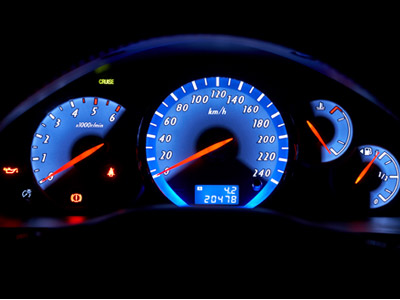Lag and lead indicators...
This is the time of the year that whenever I bump into any of my "sales friends" I can't help but ask how they did last year — I specifically ask if they hit plan. The answer always falls into two categories; either an "enthusiastic yes" or a "sheepish no"... sometimes there is colour commentary and sometimes not, but ultimately the answer is simply yes or no (or in emotional terms, "happy or sad").
If you have ever been in a commercial function (particularly sales) the objective is simple — you are given a sales plan (or quota) for the year with an expectation that by the end of the year you will have achieved that plan (and many times there's an expectation to overachieve). If your plan is $1 M and your final sales are $1.1 M, then you are 110% of plan and a goddess; whereas if the year ends up at $.95 M, you are 95% of plan and there is no such divinity. This of course answers of the question "How did you do?" but it is an after the fact question (a lag indicator if you will), and not particularly helpful if you are in the middle of working to achieve your annual plan.
What you need is something to answer the question "How am I doing?" And this brings us to "Lead Indicators". Lead indicators ensure that when your lag indicator presents itself your status as superstar will be secure.
As the name suggests, a lead indicator is a measure that speaks to how you are tracking to achieve your goal, or in the case of the the sales example above, your sales plan. Lead indicators are those activities that if achieved are a good "indication" that you will be successful. They can also help identify issues early so you have time to put new activities in place to help achieve your goal.
When you think of lead indicators you are in effect asking yourself, "What needs to be done to achieve my plan (or goal)". By identify them in a measurable way you increase your probability of success — referring back to the sales example, some lead indicators to achieving plan could be:
- Connect with 20 current customers per week
- Identify and connect with 5 new customers per week
- Attend 1 trade show per month
- Find 3 new opportunities for your opportunity funnel per week
- Connect with 10 customers on Linked In per week
- Achieve your monthly plans
The key is to achieve the lead indicator targets; by achieving these measures there is a greater probability you will achieve your plan by the end of the year. And if you are falling short of your lead indicator targets? It's probably time to seriously look at how you are doing what you are doing.
Depending on the complexity of your goal (or business) the number of lead indicators can become large and hard to manage so it is important to identify what the key measures are to quickly determine how you are doing with respect to achieving your goal — these are affectionately called Key Performance Indicators. (KPIs). Many times you will find colourful "dashboards" that make it easy to see how you are doing at a glance.
I suspect most of my "sales friends" know this because it's part of the job, but it's important to realize that lead indicators apply to almost everything you want to accomplish —
Wanna be a famous actor? What are the lead indicators that you will?
Wanna be a success artist? What are the lead indicators that you will?
Wanna be a CFO in a Fortune 500 company? What are the lead indicators that you will?
Wanna be happy? What are the lead indicators that you will?
Hopefully you get where I'm going with this...
iamgpe
